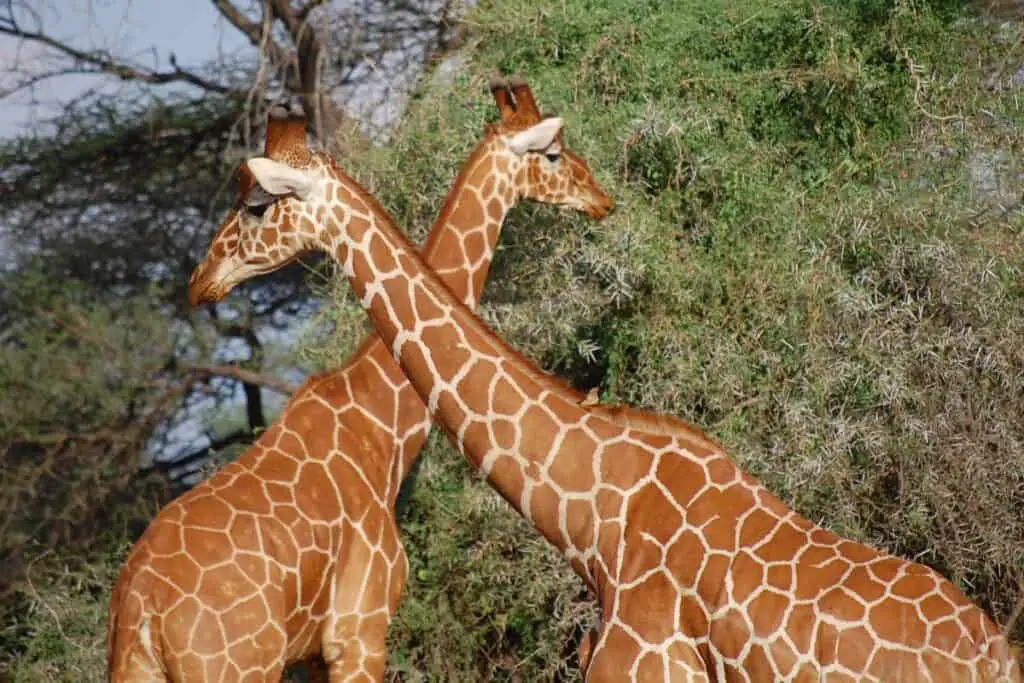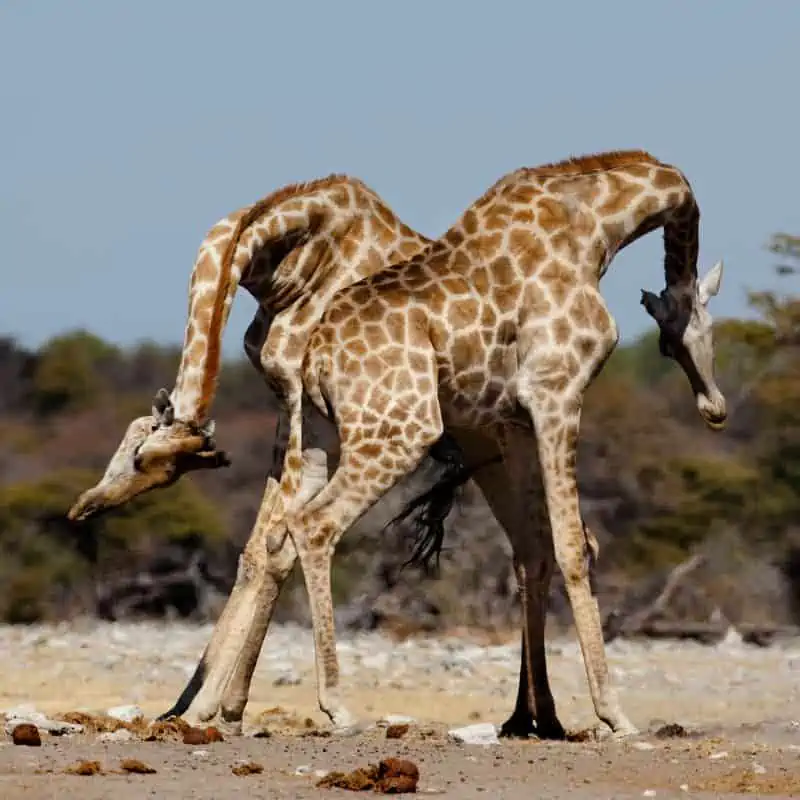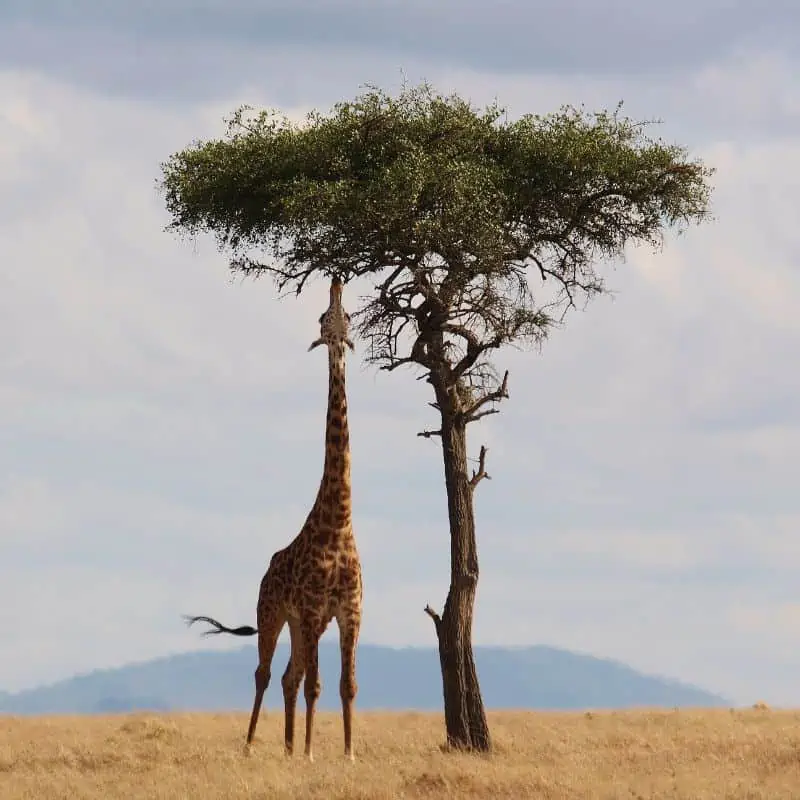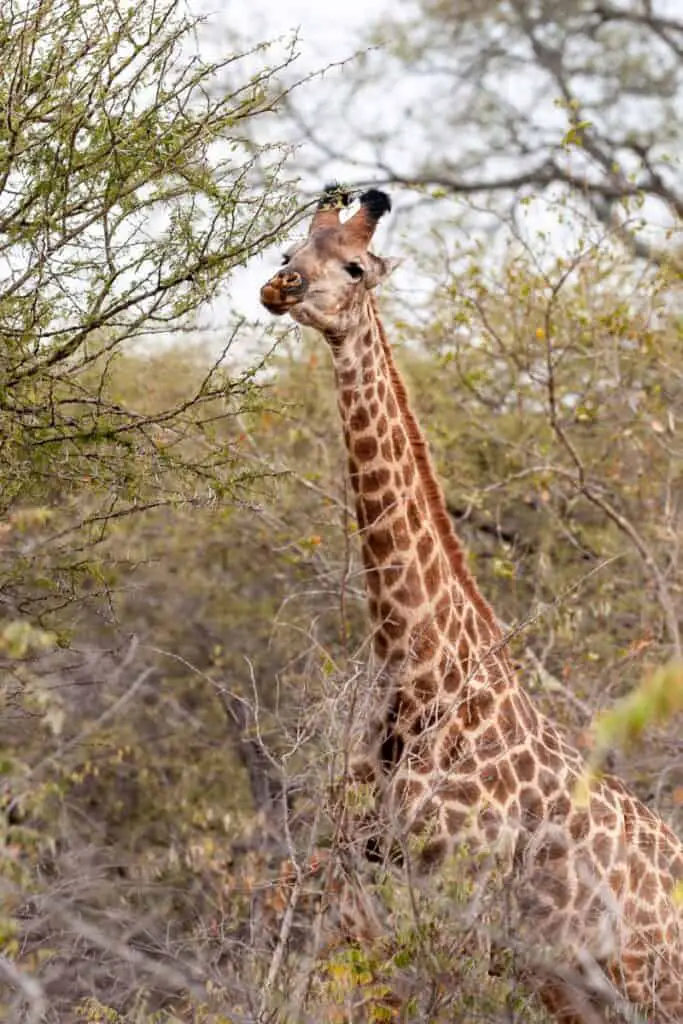There are few animals as majestic and beloved as giraffes. They are gentle and sometimes shy creatures with a large presence wherever they go. This is largely thanks to their immensely tall stature, most of which comes from their super long necks.
Giraffes have evolved into the long-necked animals we know now. There are a few different theories about why they may have developed such a long neck throughout the years, and natural selection is widely thought to be the main driving factor.
We’ll take a more in-depth look into why they have the necks they do and the pros and cons for these larger-than-life animals.

Where can giraffes be found?
Before we dive into why giraffes have longer necks than most other animals, we need to explore where these animals can be found in the wild.
Giraffes are native to the sub-Saharan region of Africa. They are not found anywhere else in the world.
They roam free on the savannahs and spend most of their day searching for food. They are primarily known to eat leaves from trees and shrubs.
Thanks to their long necks, they can reach tall trees for their food source.
This also benefits the species as it makes them less vulnerable to prey. Because they don’t have to lower their long necks to the ground often, they can keep their eye out for surrounding predators.
Why do giraffes have long necks?
The reason why giraffes have long necks is not so straightforward, and there are a few theories as to why they evolved to become the animal we know today.
Natural selection

One theory scientists have is that due to the process of natural selection, giraffes have evolved to have long necks as a means of competing with one another and ultimately producing offspring.
The male giraffes often fight with their necks by swinging them into each other.
The giraffe that wins the fight is typically called “necking” and usually has a thicker and longer neck.
The male that comes out on top has a better chance of reproducing, and therefore, their offspring will be born with longer necks over time.
This is a popular theory about why they have gained longer and longer necks throughout history.
This is also one of the possible reasons why giraffes have hornlike ossicones atop their heads.
Competing for food
Another theory that is widely believed is that giraffes’ long necks evolved as a result of competing for food sources.
In their natural habitat, there are plenty of other creatures that eat the same food as they cannot reach higher food sources.
They must find their food lower to the ground, which may cause food at that height to become scarce.
Scientists believe that due to this competition, giraffes may have evolved to reach food sources as high as 14-15 feet, which other animals may not be able to get.

Spotting predators
A final theory is that the long necks of giraffes may have developed over time as a way to spot predators easily.
Their height gives them an advantage that other smaller animals may not have and has allowed giraffe populations to thrive.
Benefits of giraffe’s long necks
As stated above, the benefits of giraffes’ long necks are many. It allows them to protect themselves from predators by spotting them before they can attack.
It’s allowed their populations to flourish with little interference from the many predators in their habitat.
Their long necks also allow them to reach plentiful food sources. Their typical food sources sit at heights of about 7-15 feet, which makes the food unreachable by many other animals.
Because their food sources remain relatively untouched by other animals, they have little competition for nourishment.
If needed, the exact defense mechanism used in “necking” fights with other male giraffes can be used to defend themselves against predators such as lions.
They can deter the attacking animal by powerful swings of their large and very heavy neck, although they mainly kick out to defend themselves from those much shorter predators.
Cons of the giraffe’s long neck
Just as the long necks give giraffes an advantage in spotting their predators ahead of a potential attack, the reverse is also true. It can be a considerable disadvantage to the animals.
Because of their height and massive size, they are easy for predators to spot. Also, due to their size, it can be hard for them to hide even if they try.
Another disadvantage of their longer-than-average necks and large size is that their body requires an immense amount of food and effort each day just to function and move around correctly.
This can take a toll and is why much of their day is filled with finding food.
Other day-to-day activities like laying down to sleep can be strenuous for them, thanks to how large their bodies are and how much effort it is to stand back up simply.
Many giraffes sleep standing up because of this, and giraffes don’t tend to sleep for very long in the wild.
How long are the necks of a giraffe?
You may be surprised to learn that even with their long necks, giraffes have the same number of vertebrae as humans, only seven.
Of course, their vertebrae are much large than a human’s. Each vertebra is thought to be around 10-inches in length.
Their necks can grow more than six feet long, sometimes reaching seven feet on rare occasions. This means a male giraffe can measure up to 19 feet, and most of that height comes from their necks.
Female giraffes usually top out at about 14 feet.

Final thoughts on giraffe’s long necks
Many theories try to explain precisely why giraffes have extra-long necks. Some believe it developed out of a need for better protection from predators. While others claim that it may have evolved this way from a need to have consistent food sources with little to no competition.
Whatever the reason, these majestic animals are some of the largest mammals on earth, and much of their size comes from the sheer length of their necks.
They are an essential part of the habitat they live in, and their long necks contribute to their species thriving over the years, even though their numbers are slowly declining in the wild.
